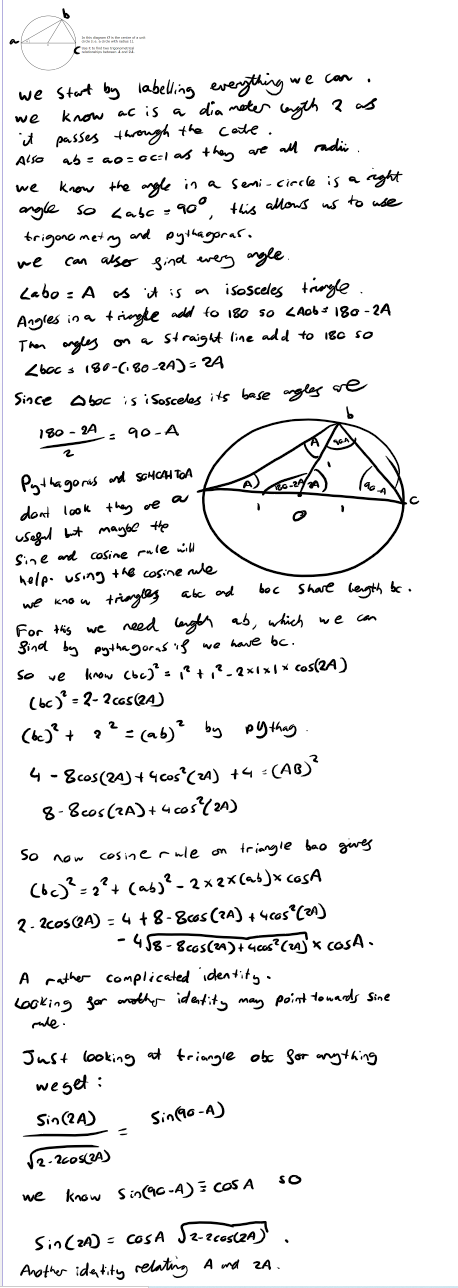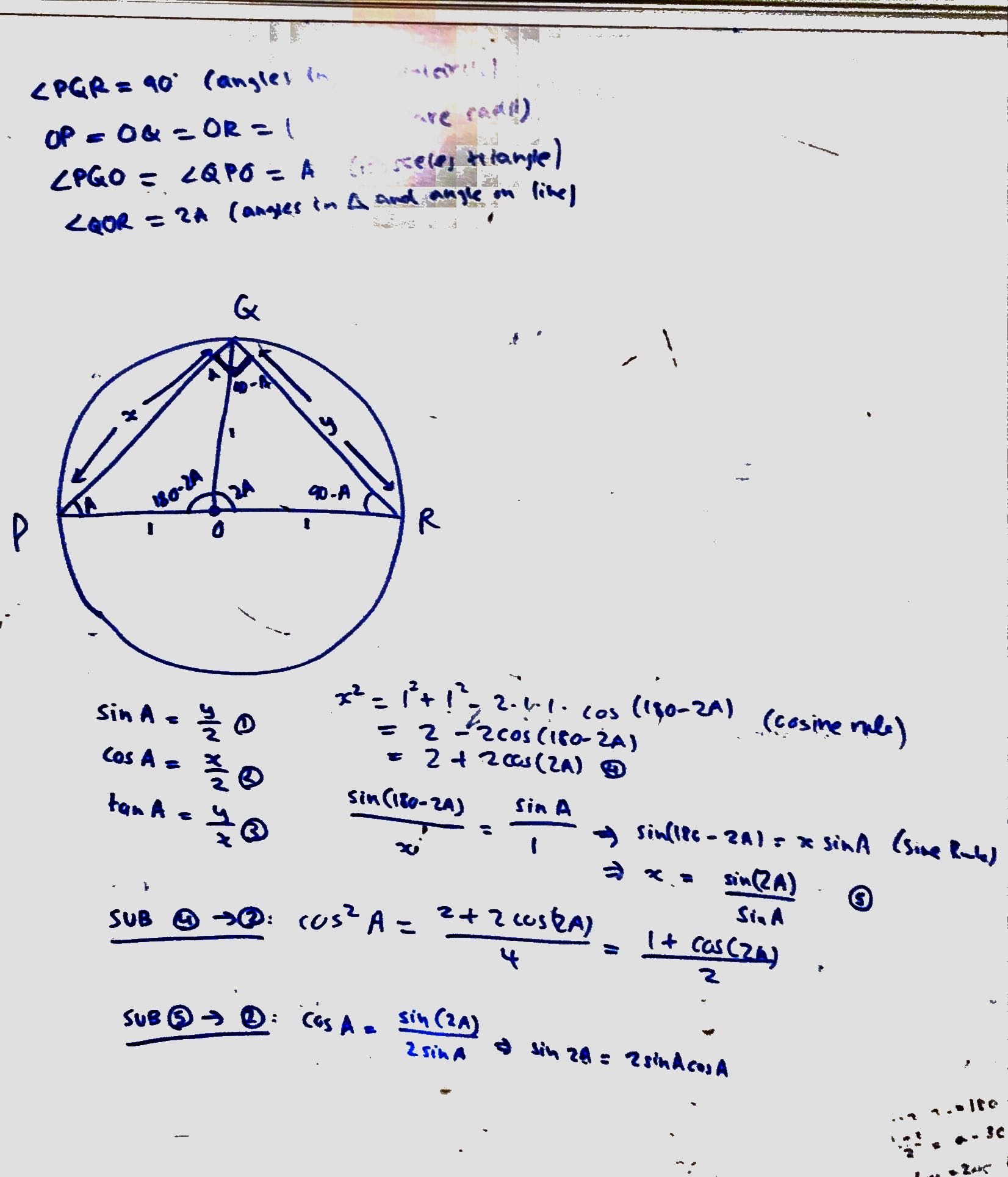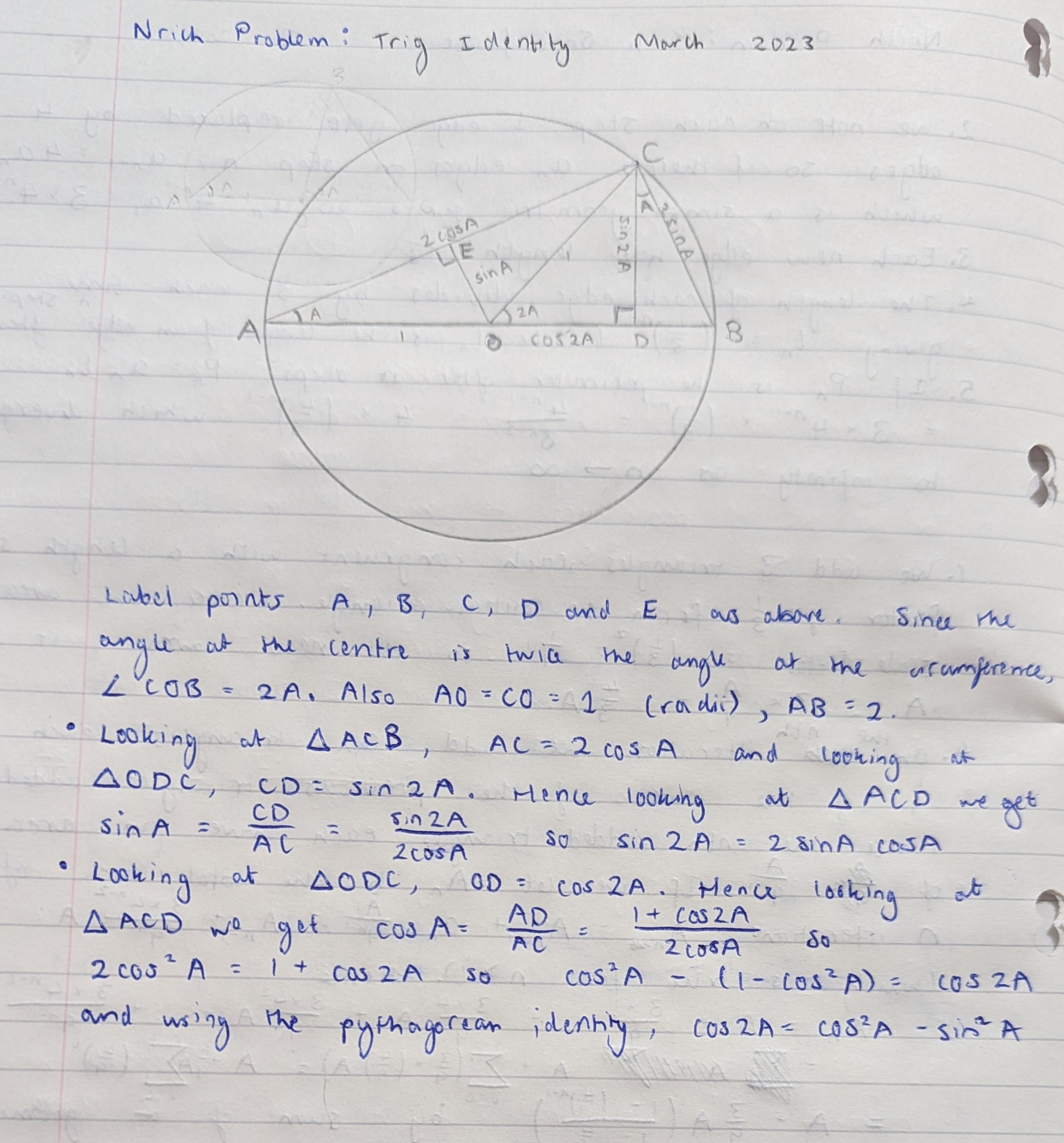Skip over navigation


Or search by topic
Number and algebra
Geometry and measure
Probability and statistics
Working mathematically
Advanced mathematics
For younger learners
Trig Identity
Age 16 to 18
Challenge Level 





- Problem
- Getting Started
- Student Solutions
- Teachers' Resources
We received several different solutions, all of which were correct and elegant.
Joshua from Bohunt Sixth Form in the UK used the cosine rule and Pythagoras's Theorem. Click to see Joshua's work.

Soumya from King's Maths School used the cosine rule and the sine rule. Click to see Soumya's work.
Dylan from Brooke Weston in the UK derived the formulas using the unlabelled angle from the original diagram. Click to see Dylan's work.
Nishad from Thomas Estley Community College in England split the triangles into lots of smaller right-angled triangles to prove the identities. Click to see Nishad's work.
You may also like
A Close Match
Can you massage the parameters of these curves to make them match as closely as possible?




